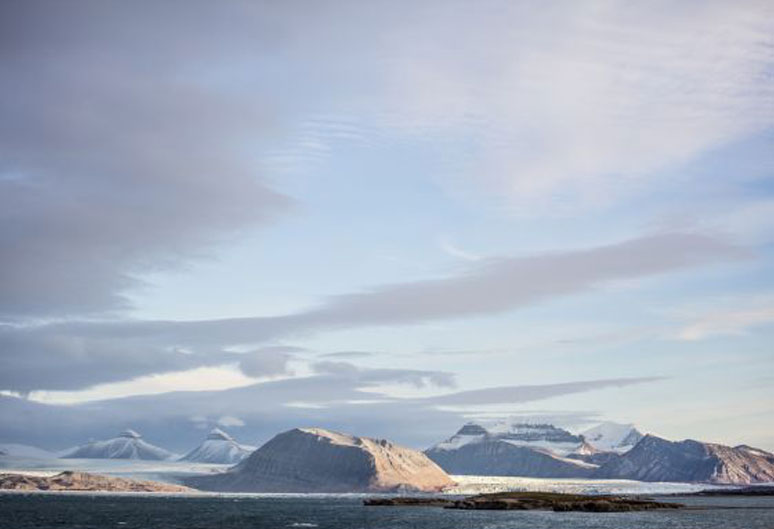James Morgan tells us about a recent photographic assignment that had him braving the bitter cold on the Arctic Ocean.
You can’t always tell when an assignment will turn into an adventure but my latest brief had all the right ingredients. I was set to be joining an Arctic research ship on a trip around Svalbard.
When the first day of my shoot arrives, we set off from Longyerbyen, heading north. The ship we’re on is an old prawn trawler, but it’s been kitted out for science. The landscape is incredible, I stay on deck until I can’t take the cold any more, then I go inside until I can’t take the sea sickness.
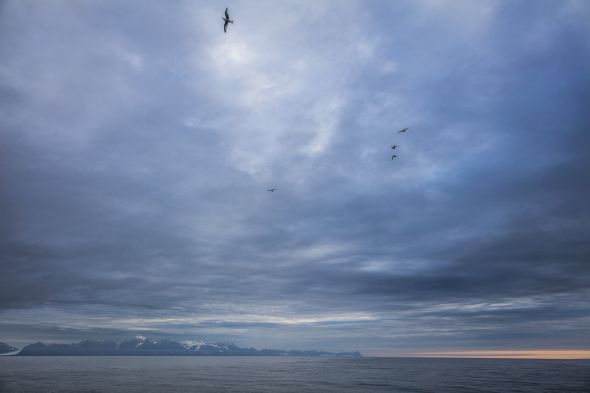 © James Morgan
© James Morgan
The purpose of the trip is to conduct research trawls and sampling to monitor how climate change is affecting fisheries ecosystems. With ice retreating and the potential for new fishing grounds moving further north, the Norwegian government are keen to inform their policies with as much hard science as possible.
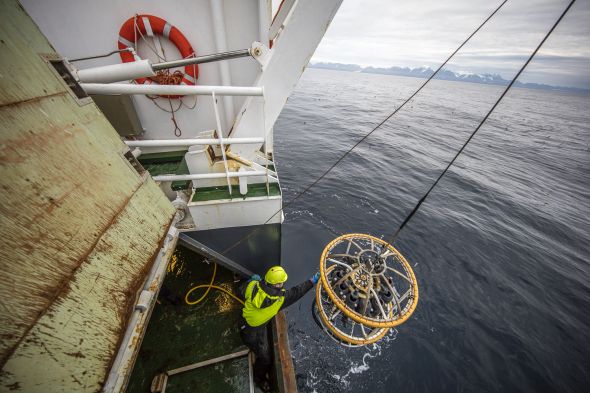 © James Morgan
© James Morgan
A few days later we arrive at Ny Alesund. With claims to be the most northerly settlement on the planet, Ny Alesund was established originally as a whaling station, then later a coal mining town. It’s now an international research centre run by the Norwegian Polar Institute. A lot of the world’s leading climate scientists do stints up here.
This is the view out of the canteen window:
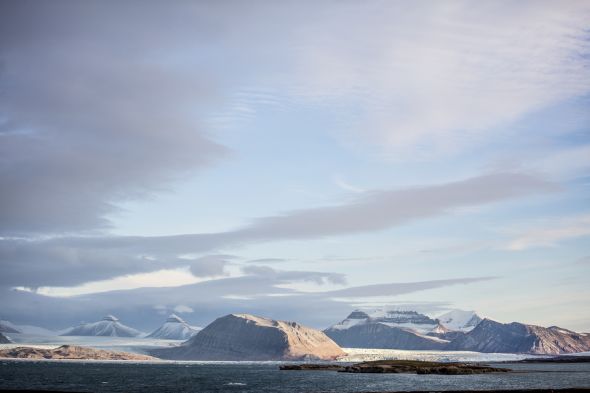 © James Morgan
© James Morgan
Across the bay a network of glaciers are slowly melting. The next morning we head out by rib to get a closer look. On the way we pass an iceberg the size of a small house and as cyan blue as a chewing gum advert. Travelling over mirror flat ocean, there’s a strange optical illusion; the glacier seems to retreat further and further away until about a kilometre out where the size of it suddenly becomes apparent.
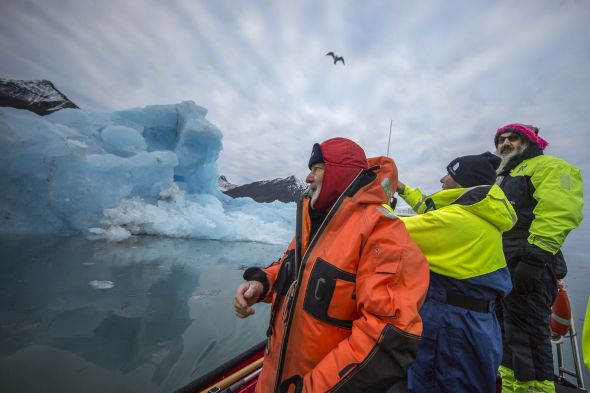 © James Morgan
© James Morgan
We arrive just in time to see a large shelving take place. This is where the glacier collapses into the ocean, sending waves for miles out across the fjord. It’s become the de facto image for climate change (along with the one of the polar bear stranded on the iceberg).
That afternoon we fly over the glacier to get a full sense of its size and, comparing with old data maps, the full extent of its retreat.
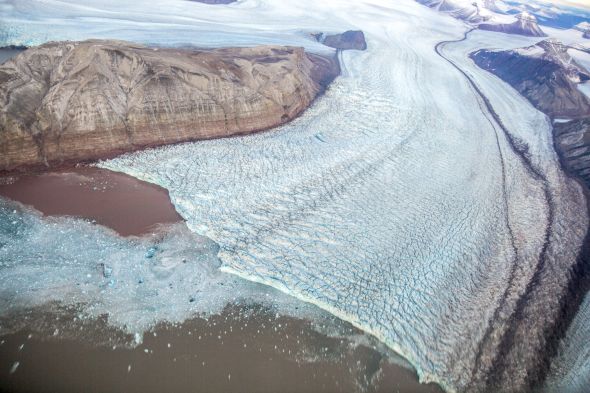 A glacier melting into Kongsfjorden bay outside Ny-Ålesund, Svalbard | © James Morgan
A glacier melting into Kongsfjorden bay outside Ny-Ålesund, Svalbard | © James Morgan
Later that night, the coastguard pick us up for a demonstration of how they’re policing these waters. We get in the ribs and head out to sea. We pull up alongside a navy ship, a hook is winched down from above, attached to the rib and we shoot fifty feet out of the water up to deck level.
The bridge is dark and shady figures hang around consoles. The entire ship is run off LNG as opposed to diesel and so the ocean outside glides by in an eerie silence. It feels like the future. We get a quick briefing and then we’re taken below deck to put on orange survival suits and helmets for the operation.
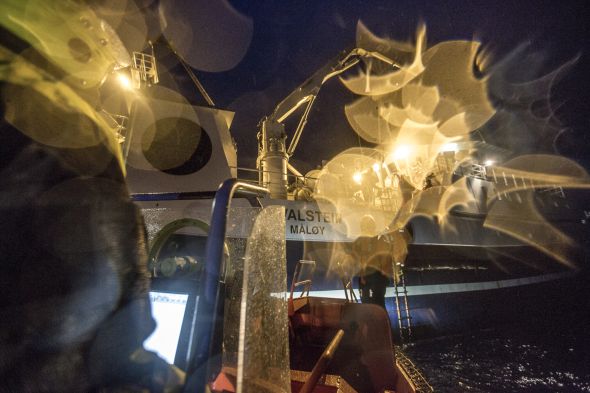 © James Morgan
© James Morgan
Then we’re back in the ribs, winched back into the ocean and blasting across the night time sea to run an inspection of a shrimp trawler. There’s no winch this end to lift the rib out of the water, instead a rope ladder is hung down. The fisheries inspectors get off first. I pack my camera into a Peli case and walk to the front of the boat. The rib pulls up alongside the trawler and I’m told to ‘commit’. I grab the ladder as the swell lifts the rib up to the ladder. The rib backs away and I’m left clinging to the ladder, the Arctic Ocean churning beneath me and a long climb up the side of the trawler.
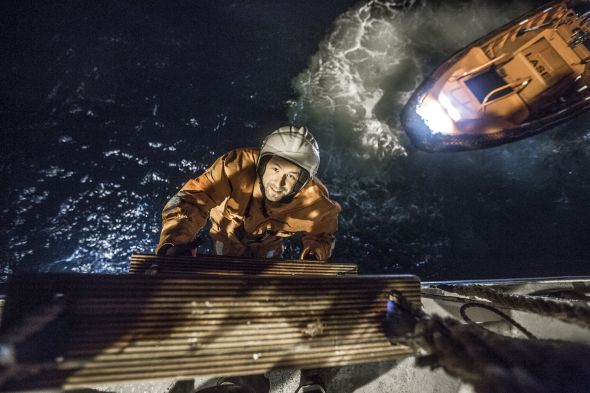 © James Morgan
© James Morgan
On board, the trawler crew are bringing up the net. The fisheries inspectors tell me that the trawl would equate to about £500 for every member of crew. They’ve done four that size today. They make good money but I don’t envy them – when the excitement wears off the sea sickness will be back. And winter is coming….
You can see more of James Morgan’s work from Svalbard on his website

